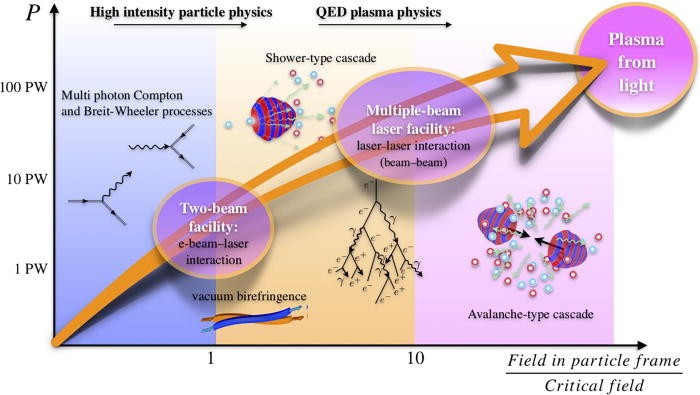ELI Beamlines (FZU – Institute of Physics CAS) has received funding from GAČR (Czech Foundation Agency) to develop theoretical tools for modeling experiments at high-power laser facilities. The research will be conducted through a collaboration between ELI Beamlines and Lawrence Berkeley National Laboratory modeling ELI Beamlines 1 petawatt L3 HAPLS and upcoming 10 petawatt L4 laser and the University of Michigan’s upcoming 3 petawatt ZEUS laser, researchers will develop a roadmap for studying strong feld quantum electrodynamics phenomena – like gamma-ray bursts or pulsar magnetospheres – which are not yet fully understood by the scientifc community. The research goals and cooperation are unique due to the results that are expected.
The project will be led from ELI Beamlines by Sergei Bulanov, department head of radiation physics and electron acceleration, and Gabriele Grittani, leader of the electron acceleration group. The American collaboration will be led by Alec Thomas, professor of nuclear engineering and radiological sciences at University of Michigan, and Stepan Bulanov, staff scientist at Lawrence Berkeley National Laboratory.

Timeline of the QED-plasma studies envisioned as a three-stage process with a facility at intermediate laser intensities for the study of fundamental strong-field QED processes, a multi-beam facility at high laser intensities to study the interplay between collective plasma effects and strong-field quantum processes, and a facility based on the laser-plasma collider to study the ultimate limits of SF QED.
At ELI Beamlines, Bulanov and Grittani will set up a team to work on the focusing of a laser beam on a single tiny spot to generate an extreme electromagnetic field that will accelerate particles to almost the speed of light and produce a bright gamma-radiation source. The gamma-rays colliding with a strong electromagnetic wave will transform into matter-antimatter particles creating matter from light.
Researchers will use these experiments to understand how diferent types of antimatter can be created, and how even more extreme laser intensities can be studied.
Czech Science Foundation (GAČR) and The National Science Foundation have partnered to provide funding for this and other projects in the areas of artificial intelligence, nanotechnology, and plasma science. This idea of this funding is to support the excellent scientific teams in the Czech republic and the USA.
ELI Beamlines is a division of FZU – Institute of Physics of Czech Academy of Sciences.





